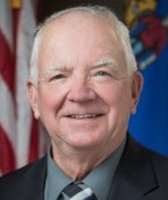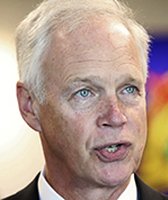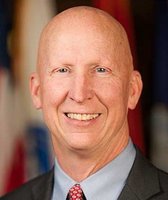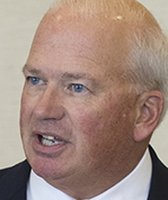Stand up for the facts!
Our only agenda is to publish the truth so you can be an informed participant in democracy.
We need your help.
I would like to contribute
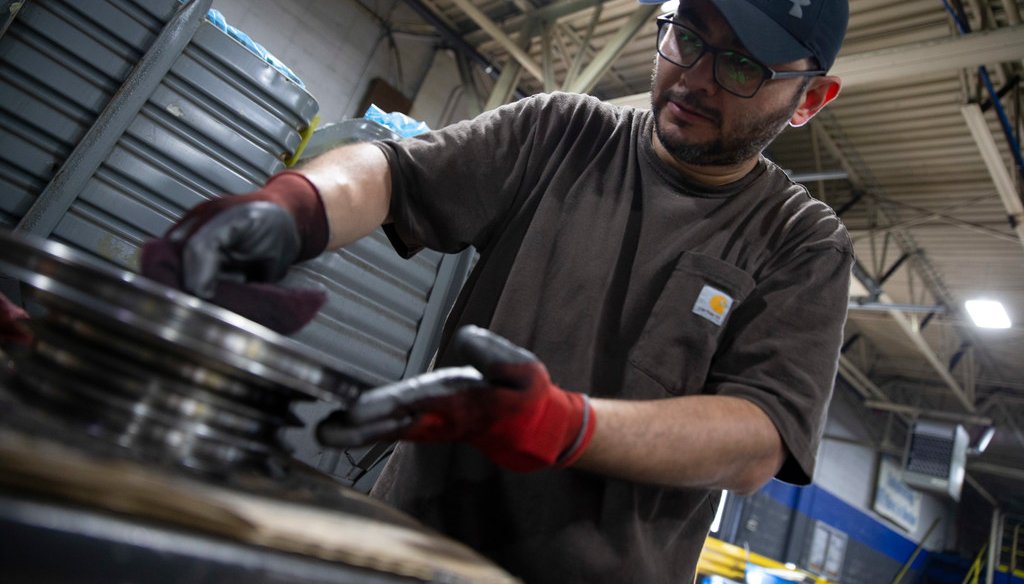
Jose Lopez works on a piece of equipment at Marini Manufacturing, Inc. in Racine, Wisconsin on Tuesday, July 16, 2019. Colin Boyle/Milwaukee Journal Sentinel
Spin from political parties isn’t exactly a new phenomenon.
But the difference in perspectives was unusually sharp in a recent TV interview with the chairmen of Wisconsin’s Democratic and Republican parties.
In the span of one minute — without any prompting from the host — one pointed to a rise in Wisconsin manufacturing jobs under President Donald Trump to make his case, while the other referenced a drop under the president.
"We’re going to talk about the president’s accomplishments over the last four years, his economic accomplishments," Andrew Hitt, chair of the Republican Party of Wisconsin, said on the Nov. 3, 2019, edition of WISN-TV’s "UpFront" program. "Over 6 million jobs created, manufacturing jobs brought back to Wisconsin — 8,000."
Responding moments later to a question about grassroots campaigning, Democratic Party of Wisconsin Chair Ben Wikler painted a very different picture of the state.
"People are concerned about drug prices, about health care costs, about the manufacturing recession that’s happening in Wisconsin right now," he said. "Over the last year we’ve lost 6,800 manufacturing jobs here."
Wisconsin is a key battleground state as Trump seeks reelection in 2020. And manufacturing is a critical issue here — especially since he ran in 2016 pledging to bring back jobs in manufacturing and other blue-collar industries.
Twenty percent of all jobs in Wisconsin are in manufacturing, according to the U.S. Bureau of Labor Statistics. That’s the second-highest percentage in the country, behind only Indiana’s 21%.
With that in mind, we set aside the Truth-O-Meter to look behind the numbers.
Can both claims be right?
The numbers
Wisconsin’s manufacturing sector employs almost a half-million people, but that total has moved around a bit recently.
The number of manufacturing jobs in the state rose steadily starting in January 2010, a low point in the aftermath of the Great Recession. The BLS’s Current Employment Statistics — an estimate based on a monthly survey of a sampling of companies — showed an increase from 424,000 in January 2010 to 465,000 in December 2016 under President Barack Obama.
Under Trump, that trend at first continued, reaching a high of 478,000 jobs in September 2018.
The job totals then dipped slightly for a few months before dropping sharply in July 2019. The September 2019 job estimate stands at 471,000.
So Wikler is correct that the state by this measure lost 6,800 manufacturing jobs "over the last year" — from September 2018 to September 2019.
Hitt is also in the ballpark, though it appears his data was a month old. The recent declines have not wiped out all the gains in the first year and a half under Trump, so the September 2019 total was about 6,000 jobs above the tally when Trump took office in January 2017. (It was 8,000 if the August 2019 jobs estimate was used.)
In other words, the trend over time depends entirely on the time period you choose.
RELATED: DNC off on Trump, Wisconsin manufacturing jobs
We should also note that these workforce estimates are, well, estimates.
A detailed census is done quarterly by the labor bureau and captures actual job figures, but the work required creates a significant delay. Second and third quarter stats for 2019 are not yet available, so they can’t be used to confirm the extent of the manufacturing workforce reduction.
Dennis Winters, chief economist with the Wisconsin Department of Workforce Development, told us he believes the actual number of manufacturing jobs in Wisconsin is higher than the labor bureau’s estimate, pointing to the way the government calibrates the estimation model. He said the difference is likely in the thousands of jobs and could be enough to shift 2019 from a net loss to a net gain in manufacturing jobs.
Winters said his agency identified a similar trend last year and believed jobs were being overestimated, and final figures confirmed that was the case.
The explanation
Of course, numbers are only part of the issue. The implication from Hitt and Wikler both is that Wisconsin voters should lay the credit — or blame — at the feet of a particular person.
So why did Wisconsin manufacturing trend up, and now back down?
A lot of it boils down to uncertainty, said Bill Lee, director of the Center for Supply Chain Management at Marquette University.
"When people get concerned, manufacturing companies tend to scale back a bit," he said. "They don’t make the investments until it becomes a little more clear how things look for the foreseeable future."
Lee and other experts were unanimous in tabbing the trade war with China as the primary cause of uncertainty in Wisconsin manufacturing.
"The general narrative is that the industrial or manufacturing sector is weakening because of uncertainty because of tariff policy," said Winters, of the workforce development agency.
Wisconsin Manufacturers & Commerce, an industry trade group, said 47% of respondents in a recent member survey reported being harmed by the tariffs imposed amid trade tensions with the Chinese.
But there are plenty of other factors.
Lee said the lack of clarity over Brexit and political situations in Venezuela and Iran also play a role.
"Even in Wisconsin we have to think about our manufacturing resources as competing on the global stage, and there’s a fair amount of uncertainty right now in the global economy," he said.
A column by WMC President and CEO Kurt Bauer in the organization’s Fall 2019 magazine also tabbed inaction on the United States Mexico Canada Agreement as a factor, given the volume of Wisconsin manufacturing products that are sent overseas.
As for Trump’s role, Lee said the president is clearly the driving force behind the tariffs and their impacts. But he said Trump should also get some credit for the preceding upswing in Wisconsin manufacturing.
Winters warned against giving Trump too much credit for the uptick, however, given that manufacturing jobs typically trend up and down with the economy and Trump took office during an "expanding business cycle."
The wrapup
In short, while both men’s descriptions were technically accurate, neither told the full story.
Manufacturing changes are complex, linked to the economy at large and any number of changes or perceived changes at the state, national and international levels.
The best available data shows these factors led to an uptick in Wisconsin manufacturing jobs, then a downward trend for several months for the first time since the Great Recession.
Voters will get their say on who deserves the blame or credit for those trends at the ballot box in November 2020.
Our Sources
SOURCES
WISN-TV, 'UPFRONT' recap: Congressman calls impeachment 'pretty damning' & more, Nov. 3, 2019
U.S. Bureau of Labor Statistics, Current Employment Statistics
Interview with Bill Lee, director of the Center for Supply Chain Management at Marquette University, Nov. 11, 2019
Interview with Dennis Winters, chief economist, Wisconsin Department of Workforce Development, Nov. 11, 2019
Wisconsin Business Voice, Manufacturing Slowdown Has Multiple Causes, Fall 2019
PolitiFact Wisconsin, DNC off on Trump, Wisconsin manufacturing jobs, Oct. 18, 2019
















